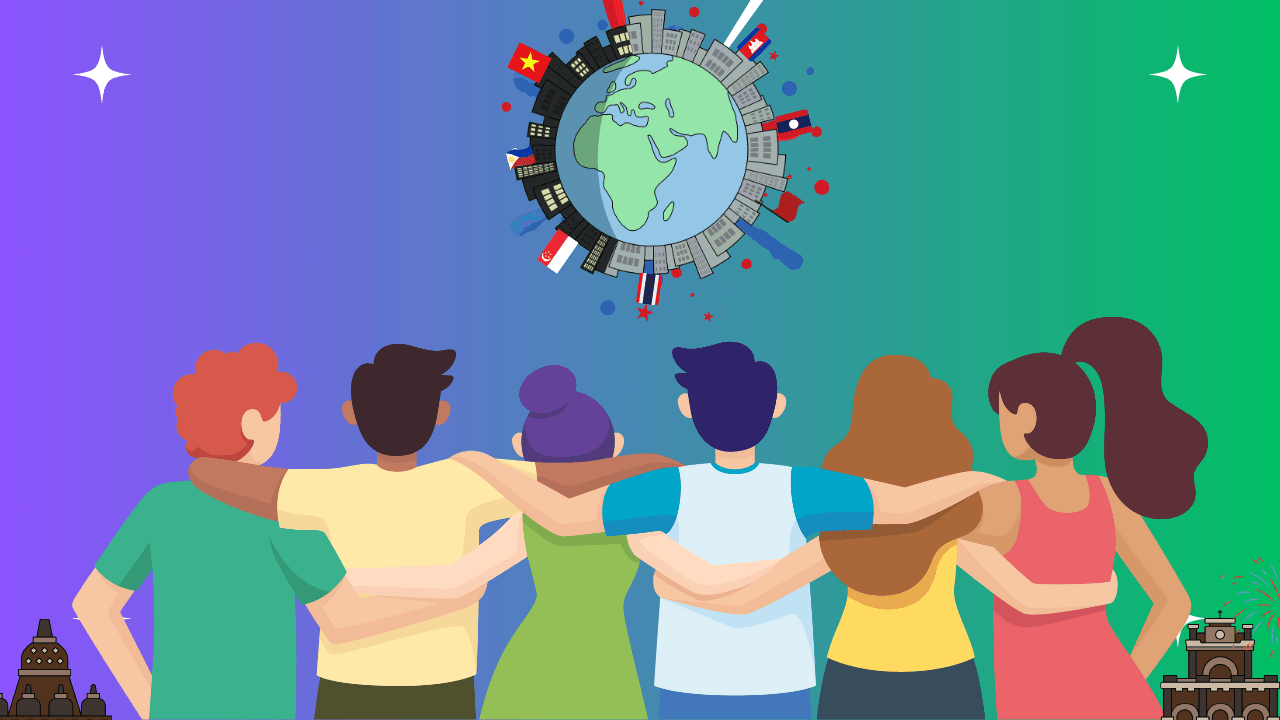What is ASEAN Day?
ASEAN Day is commemorated annually on August 8, marking the establishment of the Association of Southeast Asian Nations (ASEAN) in 1967. This significant occasion serves as a reminder of the commitment of its member countries towards creating a collaborative and united region characterized by great diversity. The founding nations, namely Indonesia, Malaysia, the Philippines, Singapore, and Thailand, initiated this regional organization with the intention of fostering economic growth, social progress, cultural exchange, and mutual peace.
The importance of ASEAN Day extends beyond mere celebration; it emphasizes the organizational objectives that underscore cooperation and integration among Southeast Asian countries. Throughout the years, ASEAN has evolved to include additional member states, including Brunei, Vietnam, Laos, Myanmar, and Cambodia, collectively representing a dynamic region of over 600 million people. This day acts as a celebration of the rich mosaic of cultures, languages, and traditions that characterize Southeast Asia, reinforcing the concept of unity in diversity.
A notable aspect of ASEAN Day is its role in raising awareness about the organization’s goals and achievements. The celebrations often feature various activities, including cultural performances, educational events, and community engagement initiatives aimed at highlighting the benefits of cooperation in promoting peace, stability, and economic growth. It serves as an opportunity for the ASEAN community to reflect on the progress made in regional collaboration and to renew their commitment to the principles that guide the organization.
In essence, ASEAN Day is much more than a date on the calendar; it embodies the aspirations of a diverse region working together to overcome common challenges and capitalize on shared opportunities for a brighter future. Through this celebration, member countries reaffirm their dedication to the core values that ASEAN represents: solidarity, resilience, and mutual respect.
History and Evolution of ASEAN
The Association of Southeast Asian Nations (ASEAN) was formed on August 8, 1967, in Bangkok, Thailand, with the signing of the ASEAN Declaration, also known as the Bangkok Declaration. The founding members—Indonesia, Malaysia, the Philippines, Singapore, and Thailand—came together to promote regional stability and cooperation, driven largely by a shared desire to curb external communist influence during the Cold War. This initial focus on political stability and security concerns laid the foundation for ASEAN’s activities in the subsequent decades.
In the early years, ASEAN’s scope was relatively narrow, concentrating on fostering diplomatic relations and peace among member states through the principle of non-interference in domestic affairs. However, the organization quickly recognized the need for economic collaboration amid growing GDP disparities and regional unpredictability. The establishment of the ASEAN Free Trade Area (AFTA) in 1992 marked a significant step in ASEAN’s evolution, facilitating intra-regional trade and boosting economic cooperation amongst member nations.
Throughout the 2000s, ASEAN continued to adapt and expand its purpose. The adoption of the ASEAN Charter in 2008 signified a commitment to closer political and economic integration, alongside enhancing the role of the organization in addressing not only security issues but also cultural and environmental challenges. Major milestones, including the establishment of the ASEAN Community in 2015, underscored ASEAN’s efforts to bolster regional unity through socio-cultural integration, economic collaboration, and political cooperation.
Today, ASEAN is recognized as a key player in the global arena, demonstrating resilience and adaptability in facing both regional and global challenges. The celebration of ASEAN Day serves as a reminder of how far the organization has come since its inception, highlighting the progress made in unifying diverse cultures and fostering peace among its ten member states.
Importance of ASEAN Day for Member Countries
ASEAN Day, celebrated annually on August 8, holds significant importance for the ten member countries of the Association of Southeast Asian Nations (ASEAN). This event serves not just as a commemoration of the founding of ASEAN in 1967, but as a vital reminder of the unity and collaboration that defines the region. Each member country has its own unique way of celebrating this day, which reflects their diverse cultures while emphasizing a common goal of regional integration.
National events, such as parades, concerts, and cultural exhibitions, are commonly organized to highlight the rich tapestry of traditions that each country offers. These celebrations foster a sense of pride among citizens and promote regional awareness. Educational initiatives are also a crucial component of ASEAN Day celebrations. Schools and universities often engage in activities that educate students about ASEAN’s objectives, history, and the roles each member country plays within the organization. Such initiatives are instrumental in cultivating a generation that is both aware of its regional identity and prepared to engage with ASEAN’s future challenges.
The benefits of ASEAN Day extend beyond mere celebration; it symbolizes the collective efforts of member states towards improving trade relations, fostering economic cooperation, and enhancing cultural understanding. With ASEAN’s focus on addressing shared challenges, such as climate change and public health threats, this day serves as a platform to renew commitments among member countries. It reinforces collaboration, ensuring that the nations stand together in the face of common adversities. As countries share resources and expertise, they can better address issues that threaten the well-being of their populations and environments.
Ultimately, ASEAN Day represents a commitment to unity in diversity. Each celebration contributes to building a stronger community, emphasizing not only the individual achievements of each member country but also the collective strength of the ASEAN region as a whole.
Looking Ahead: The Future of ASEAN and its Aspirations
As ASEAN celebrates its achievements on ASEAN Day, it concurrently looks toward the future with a focus on its aspirations set in the comprehensive ASEAN Vision 2025. This vision encapsulates a commitment to deepen regional integration, promote sustainable development, and bolster connectivity among member states. The strategic initiatives laid out in this vision emphasize a collective endeavor to tackle emerging challenges while fostering economic growth and stability.
In the face of shifting geopolitical dynamics, ASEAN’s potential to maintain regional cohesion is critical. The organization seeks to navigate complex external influences while ensuring that member states engage in constructive dialogue and collaboration. A primary challenge lies in addressing the development disparities that exist among these diverse nations, which can hinder collective progress. ASEAN’s commitment to inclusivity and equitable growth is fundamental to overcoming these obstacles and achieving meaningful unity.
A key aspect of the future of ASEAN involves the engagement of youth and the promotion of public awareness surrounding ASEAN activities. As the next generation of leaders, young people play an essential role in driving change and innovation. By fostering a sense of belonging and understanding of ASEAN’s relevance, efforts can be made to cultivate a population that is not only aware of its cultural richness but also empowered to participate in regional affairs. Initiatives aimed at enhancing youth participation in decision-making processes represent an essential strategy for building a resilient ASEAN community.
In conclusion, the future of ASEAN hinges on the successful implementation of its Vision 2025, coupled with a sustained commitment to unity and addressing both internal and external challenges. The active involvement of youth and the fostering of public awareness are crucial in shaping a prosperous and harmonious ASEAN, celebrating its diversity while working towards shared goals.





